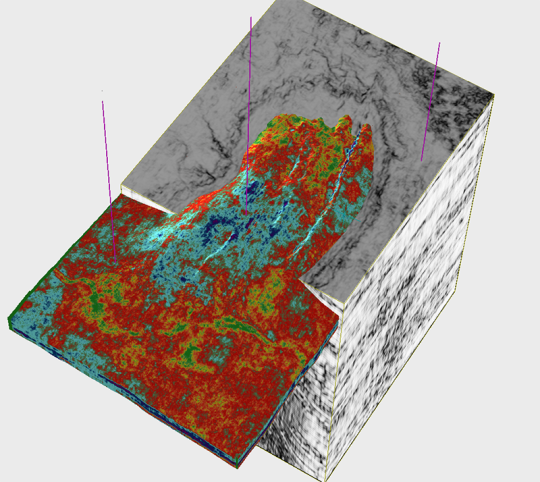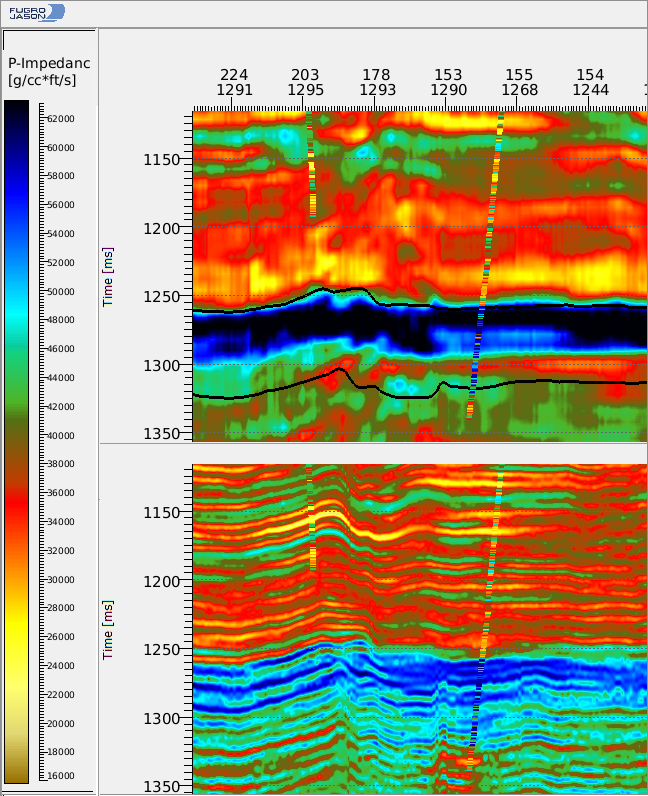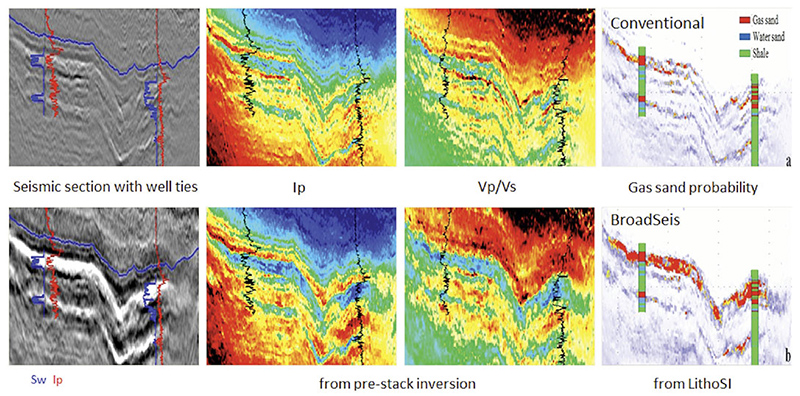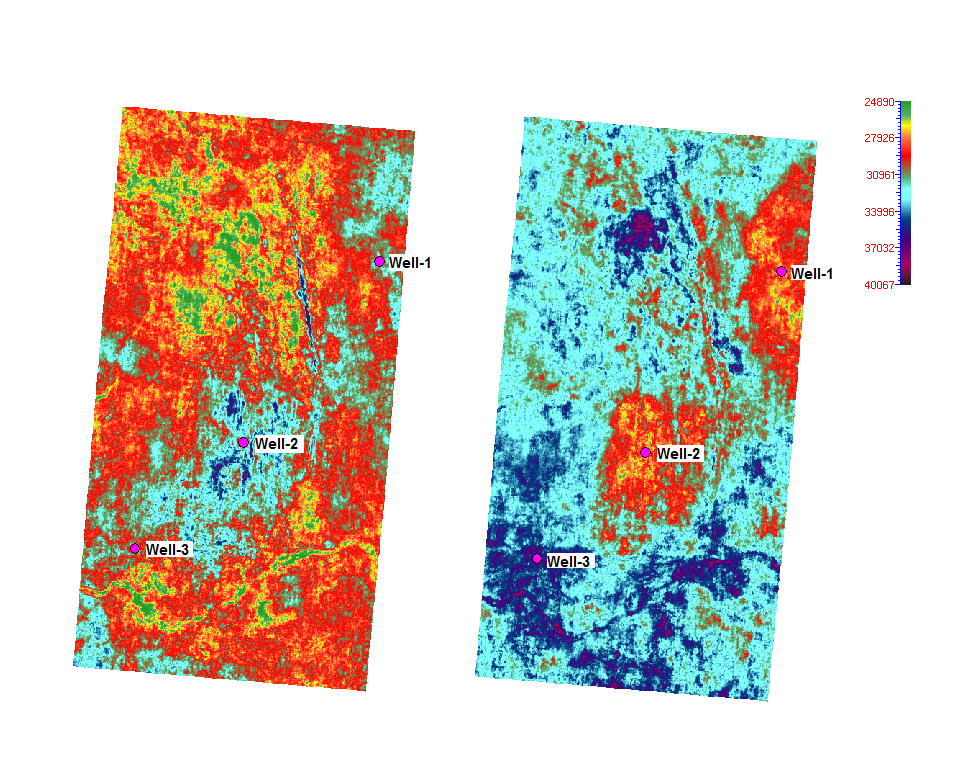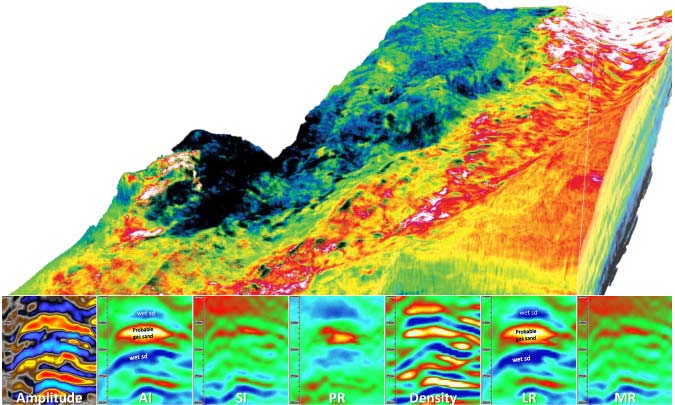Seismic Inversion
As known, an inversion mechanism means generally speaking, to determine the features of a process by observing its effects. In this particular case, we talk about determining Acoustic Impedance values (Velocity times Density) from seismic input, removing the wavelet and creating models which attempts to resemble reality as close as possible.
Seismic inversion transfers the seismic interfaces into layers and provides powerful additional information that can be used to lower your risk in exploration, and to quantify your reserves in production.
PPZG offers a full suite of seismic inversion techniques to our customers:
- Post-stack inversion transforms a single seismic data volume into acoustic impedance through integration of the seismic data, well data and a basic stratigraphic interpretation. The resulting impedance volume can be used to predict reservoir properties away from well control.
- Pre-stack inversion transforms seismic angle or offset data into P-impedance, S-impedance and density volumes through integration of the seismic angle/offset gathers, well data and a basic stratigraphic interpretation.

